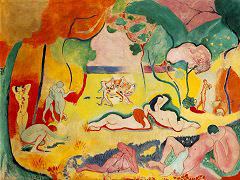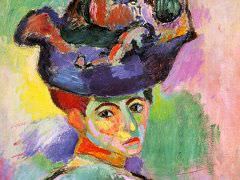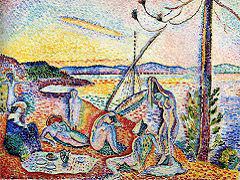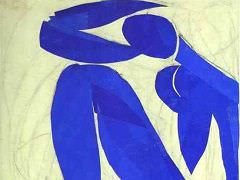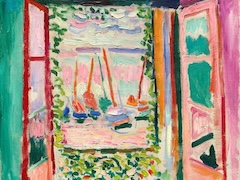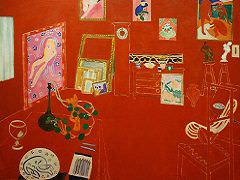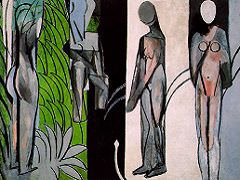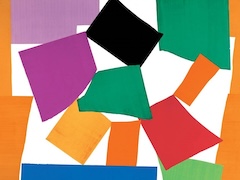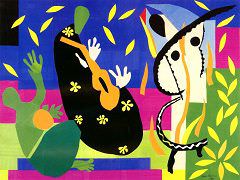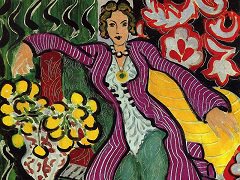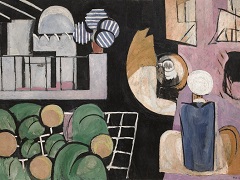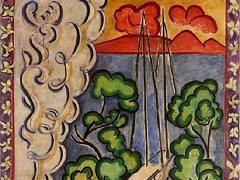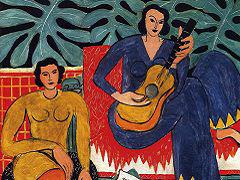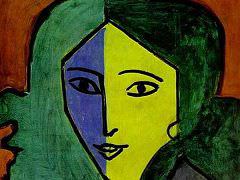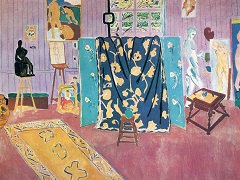Eentrance to the Kasbah, 1912 by Henri Matisse
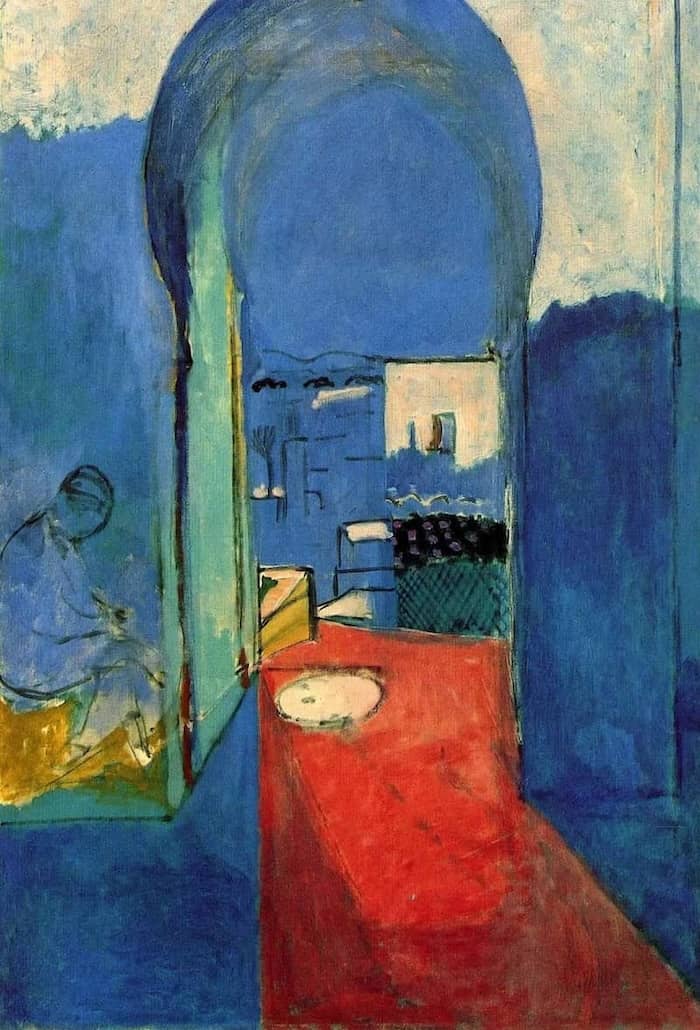
Entrance to the Kasbah is the right-wing of the triptych that the artist produced during his second trip to Tangier, one made in the company of his old Fauve comrades, Marquet and Camoin. Although there is a sketchily realized seated figure in the shadow at the left, the picture is almost exclusively concerned with rendering a tightly defined architectural space as seen under the violent contrasts of light and shade typical of North Africa. The colors function accordingly. The blue circle of sky is barely distinguishable from the blue of the arched passage. The blue shadows of the foreground are only slightly more saturated, perhaps chiefly to support the intense pitch of the pink stream of sunlight on the pavement.
At first glance this "keyhole" motif seems unique in the artist's work, until we realize that it is a special variant on the idea of the landscape or view seen through a window; this latter theme is actually the subject of Window at Tangier, the left-hand panel of this triptych. In that picture we are offered a broad panorama of the city, perhaps from the artist's hotel room, whereas here the view beyond is constricted with respect to both width and depth. The color relationships between the three pictures are especially interesting. The darker blues of the left panel suggest the murkiness of interior shadows; the green of the central panel behind the model, Zorah, suggests the half-light of a partly shaded exterior; and the intense luminosity of Entrance to the Kasbah, farthest to the right, illustrates the unrelieved power of the tropical sun reflecting on building exteriors. The movement from left to right is one of darkness to light, which in effect becomes the subject of the whole ensemble. Although each painting has its own distinctive coloration, there are subtle points of contact joining the three together in a unified way. Through the decade the idea of the triptych recurs in Matisse's work: in addition to the Amido-Zorah-Fatma series of the previous winter, there is the splendid Three Sisters, in which three models are posed in different costume in three varied compositions in each of the panels, resulting in a grand total of nine figures alternately standing or seated.

